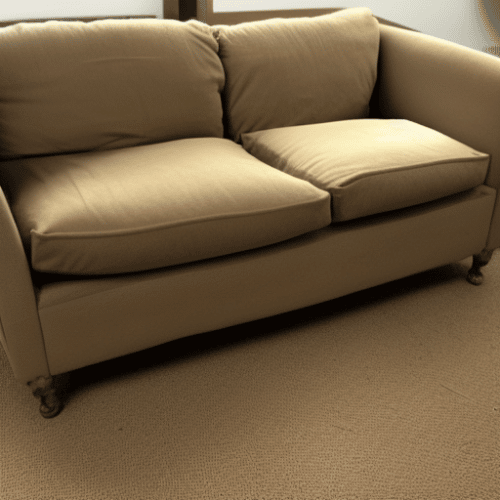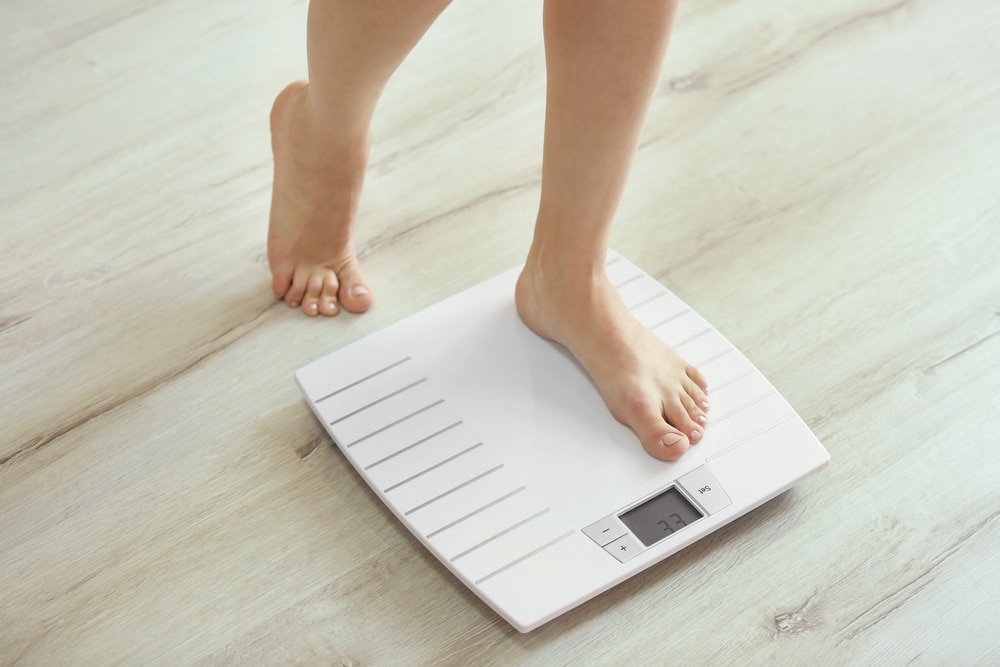Last Updated on
Do you need to reupholster your sofa? Maybe the sofa you invested in not so long ago doesn’t match your current décor scheme. Perhaps your furniture is beginning to look a little worn, but the sofa’s seat cushions and underlying structure are still good. You’d be surprised how easy it is to transform an old sofa with a little guidance.
If you’re feeling crafty and you have access to some durable fabric to start your furniture revival product, you could be in the perfect position to reupholster a coach yourself. Today, we’re going to cover all of the steps on how to reupholster a sofa. Just remember, this isn’t going to be a one-weekend project. It would help if you were ready to invest some decent time and effort into the project to get the best results.
A Step-by-Step Guide On How to Reupholster a Sofa
Follow the step-by-step guide below to make sure you reupholster your sofa the right way.
Step 1: Measuring Your Sofa
The first step in transforming a sofa or sofa bed with new upholstery fabric is figuring out how much fabric you’re going to need. Planning your project will ensure you don’t end up with not enough fabric to cover the wood frame and any pillows or couch cushions you want to make to accompany the design.
Start by carefully measuring the outside soda fabric on the shell of the sofa and the interior fabric (on the cushion parts where you sit). You’ll also need to think about any fabric you might need to go under your new covers. If the original fabric had a protective layer, you might want some of your protective layers and waterproof material to go underneath the new design.
Don’t forget the cording around the seams of the sofa, and the batting too. Consider all materials required to make your couch look perfect before you start ripping the old fabric off your sofa. Remember, you don’t necessarily need new foam if your existing couch is still in good condition.
Step 2: Make a List and Purchase Supplies
As you measure your couch to plan for the reupholster materials required, make a list of all the fabrics and products you’re going to need. Make a note of anything you might forget while taking measurements, like thread so that you can sew your fabric together and extra staples or buttons to make the sofa look more professionally made.
When making notes on how much material you need for couch covers, remember to provide an additional allowance for accidental miss-measurements. You might need a couple of inches of extra fabric to cover a seam or a sofa overlap you didn’t consider before.
When you’re done measuring, start planning all of your cuts on paper, drawing the shapes and how each part of the couch will be attached to the next. You can find helpful templates for sofa reupholstery in some places, but you might find that you need to create your sketches to get a more accurate image of what the finished product will look like.
With your list, and a good image of your project in mind, you can go and stock up on supplies. Don’t worry if you have to make a few trips to the store because you’ve forgotten something.
Step 3: Deconstruct Your Couch
Once you’ve started ripping your couch to pieces, you realize just how much work it takes to separate this material. The toughest part of your reupholstery project will often be deconstructing everything without causing any damage to the internal material or the chair’s frame.
Make plenty of notes as you deconstruct your couch. This will give you a good idea of how upholstery elements fit together, from the back of the couch to the front. Recovering a sofa is much easier when you know what layer goes on top of what. You might even find that you save money and time by taking pictures of the couch as you deconstruct it, so you can more easily figure out how to put it back together as you go.
Next, turn the sofa upside down and remove all the staples from the back and bottom of the couch. You can use pliers to do this in most cases. Remove the old upholstery fabric carefully, and pay attention to the location of any tack strip and where it goes. If you need to remove a tack strip, you can use a staple remover or pliers in the fold of the fabric and lift gently. Try not to tear anything.
Remove the rest of the fabric pieces until you’re left with the frame and padding. Most couches may need a few bits of foam to be replaced for them to look their best again.
Step 4: Make Your Cushion Covers
Next, it’s time to create all of the fabric coverings for your new furniture. Make sure the measurements are correct. You can use your sewing machine to make the sofa’s bottom cushions and back cushions. You may need to apply an extra layer of protective fabric to the parts you’re going to apply straight over the cushioning or foam on the back of the couch, the arm of the chair, and other elements that don’t have their removable cushions.
While you can hand sew some elements of your couch, you’ll save a lot of time with a machine. When choosing fabric for your sofa, try to avoid anything too stretchy, as this can make it difficult to get an even finish on your new furniture.
Finish the cushion covers and any drop cloth you might want to create, then add a layer of battling to the couch springs and staple them into place. Measure the fabric to cover the piece and sew everything into place. Keep your newly covered cushions away from the sofa while you apply all the fabric that needs to be on the frame, including the drop cloths. Make sure to pull the fabric tight when applying tack strips or keeping things connected with your staple gun.
Step 5: Recovering the Sofa Arms and Back
When replacing the old fabric on a couch, the most difficult part will often be adding new fabric to the arms of the chair. When you reupholster a couch, start by attaching the material for the inside arms first, then move onto the outsides, pulling the fabric tight on each side as you go to make everything look as even as possible.
Next, cover the inside back of the sofa, adding a few layers of batting depending on the degree of comfort you want to achieve with your couch. Today, there are products available on the market to help you stick materials in place around a curve. You can also use tack strips to connect the material on the left and right vertical sides. Staple the piece shut at the bottom of the frame.
Once everything starts to look properly covered again, you can prepare and apply the cording. Cut your cording into the size of the pieces you need, then sew each cord into place. This should help to complete your couch reupholstering and make everything look neat.
Step 6: Add the Finishing Touches

While you’re using your staple gun to finish the bottom of the frame, you might also want to add new couch legs if the old ones look outdated (like your old fabric). You can also apply extra elements as you begin to feel more comfortable.
If you didn’t like how the old fabric looked on the frame, consider adding buttons and other elements to make the furniture look more refined. You can also add zippers to the pillow covers to change the design from time to time or wash the fabric.
If you do an awesome job of giving the right couch new life, you might decide to experiment with making other accessories for your sofa. For instance, if you’ve nailed foam and upholstery, you should have an easy time making throw pillows to go on your sofa too. Alternatively, you can follow up on your reupholstering job using different fabrics to make throws for the piece.
Before you get to work on the last stage of reupholstering a couch (adding the finishing touches), give the piece a quick look over. You don’t want to start your reupholster project again because you forgot to finish one crucial part. Also, double-check that everything is in place to make sure your couch is comfortable.
Reupholstering Your Sofa and Other Furniture
Sofa reupholstery is becoming an increasingly popular practice, particularly with so many reupholster guides and reupholster videos to show you what you need to do to get a great result. Reupholstering can seem like a challenging task if you’ve never experimented with upholstery before. However, once you get the hang of one reupholstering project, you’ll find it easy to jump into more.
Now that you know how to reupholster a sofa, you can take the skills you’ve learned from your sofa reupholstering and use them to reupholster and create a range of things. Don’t be afraid to reupholster other products around your home if you have enough staples and fabrics left over. Last but definitely not least, make sure your couch is always clean!
Rebekah is a writer who loves to explore new products and find hacks that make life easier. She has a knack for all things home improvement, health and fitness. So you’ll often find her on Pinterest or browsing Houzz for ideas.
She’s always looking for the next thing to fix up around the house or what gadget might be just right for her lifestyle. Rebekah enjoys exploring new recipes, taking care of her family, and making sure she stays healthy with regular workouts at the gym.



